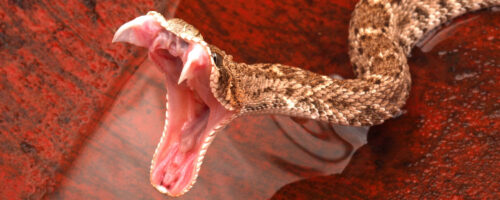The eight point rule is the primary harvest strategy of some managers trying to increase buck antler size. Managers using the eight point rule allow harvest of bucks with eight or more antler points while protecting bucks with fewer points. Although intentions are good, the eight point rule is minimally effective for protecting superior bucks. Many yearling bucks with superior genetics and good nutrition have eight or more points on their first set of antlers. Nearly all bucks with superior genetics and adequate nutrition have eight or more points when 2 years old. Bucks with inferior antler genetics may never have more than seven points, even when mature. So, the eight point rule basically gives little or no protection to the superior bucks while it protects and promotes the inferior ones.
Harvest has a tremendous impact on white-tailed deer buck size and antler quality. Over-harvest of young bucks is the primary factor limiting antler size in Oklahoma. Statewide, it is more limiting than the other important factors of nutrition and genetics. In 1994, aging by tooth wear indicated 96% of the Oklahoma white-tailed deer buck harvest was less than 4 years old. A white-tailed buck generally does not reach its maximum body and antler size until it is 4.5 to 9.5 years old. The Oklahoma buck harvest data implied that only 4% of the buck population got old enough to express its growth potential. Only a fraction of this 4% had the genetics and nutrition to produce trophies. This is why trophy bucks are so rare.
When the goal is to increase buck size, it is important to let young bucks live and harvest enough does to keep deer numbers below carrying capacity of the habitat. This allows deer to receive optimum nutrition. For this goal, deer harvest should be comprised primarily of does and mature bucks. To increase buck size, hunters must either harvest so few bucks that they do not affect age structure of the buck population, or hunters (or hunting guides) must learn to differentiate between young bucks and mature bucks. At a distance, buck maturity can be crudely estimated by observing antler mass and body mass.
Trophy buck management is relatively inefficient on most properties without a high fence because most bucks are exposed to harvest elsewhere. However, if larger bucks are a goal on any property, shooting young bucks just compounds the problem. An option to manage buck harvest on some properties is to limit each hunter to only one buck per year and require each hunter to pay a taxidermist to shoulder mount any buck harvested. Also, a limit should be established for the total number of bucks that can be harvested which should represent no more than 10-33% of the available bucks.
For more information about white-tailed deer management, the publication White-tailed Deer: Their Foods and Management in the Cross Timbers is available from the Noble Research Institute.



Comment